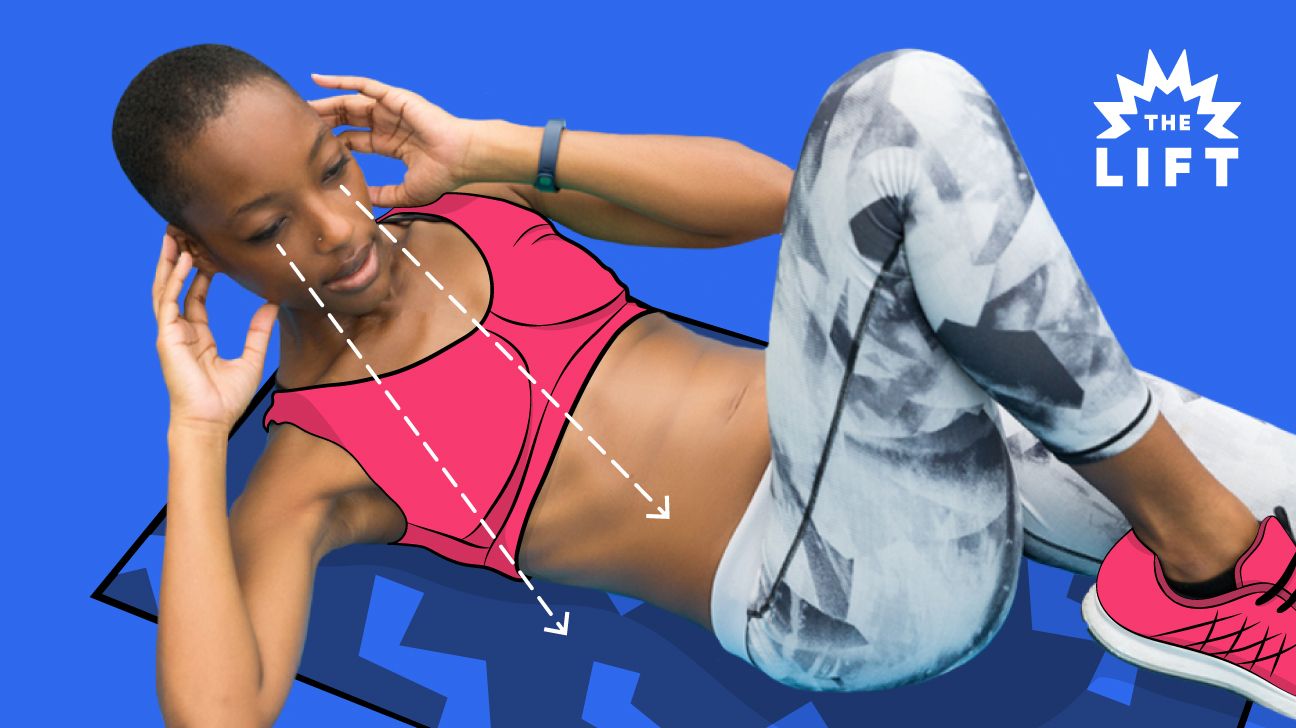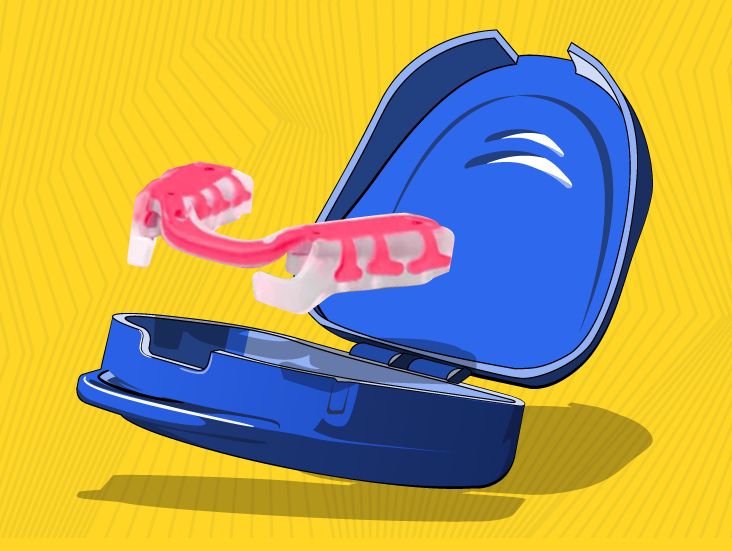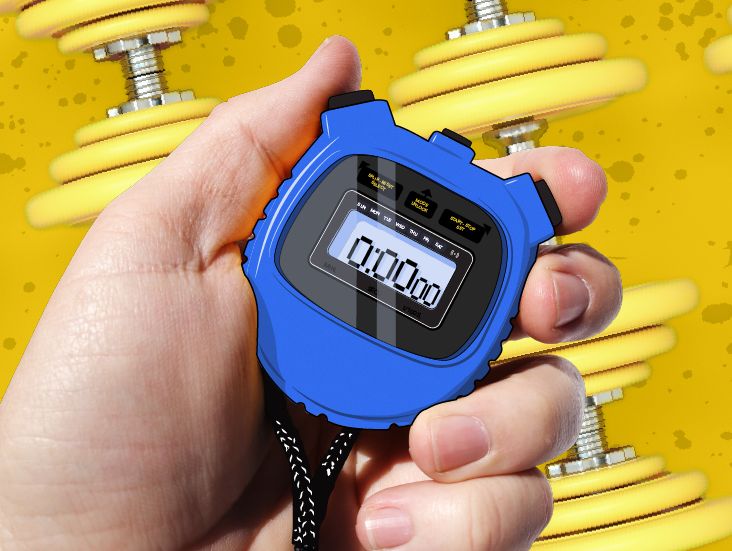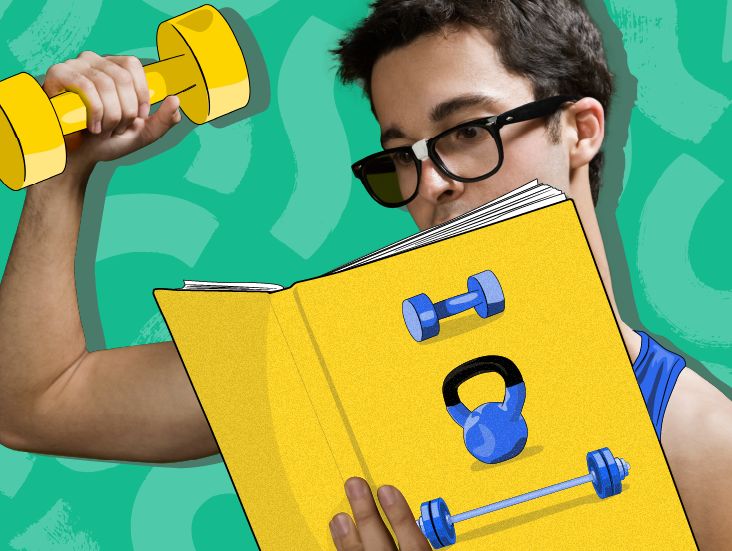
You might look like Mat Fraser or Serena Williams while exercising (read: DAMN GOOD). But spoiler alert: Where you look while you exercise is more important than how you look while doing it.
Read on to find out where to set your gaze during the most common exercises. Trust, your spine will thank you for eyeballing this guide.
As a general rule, “you want to maintain a neutral neck while you workout,” says doctor of physical therapy Marcia Denis, PT, DPT and founder of Just Move Therapy in South Florida.
Great, you say, more fitness “speak.”
So… WTF does neutral neck mean, exactly?
“With a neutral neck, your head isn’t reaching too forward or tilted too far back. It isn’t twisted to the left or leaned to the right,” Denis says.
Let’s say someone (for instance, that cutie with the booty by the squat rack) is eyeballing you from the front. If your neck is in a neutral position, they’ll be able to draw a straight vertical line from your ear lobes to your shoulder.
Also (!) if you put your hand under your chin to give a cute “hello” (think the Grace Face but without the head tilt), your hand would be parallel with the ground.
A neutral neck = a neutral spine = a stable spine.
“The spine was designed to work best when stacked in order like a tower of blocks,” says Denis. “Twist it out of place or poke the bottom block and it all falls.” Obvi, our heads won’t fall off from bad form (LOL), but some structure somewhere is going to pick up the slack.
“Will it be pain in the traps or shoulder blades? Will your upper back start pulling forward? Will you start pinching nerves and have a few fingers go numb? All these outcomes are possible when you don’t set your spine up for success.” Yikes.
Now that we’ve covered the basics, let’s get specific:
Plank
For the high plank, don’t look at your fingers. Find the stain that’s a foot in front of your hands. Look at it! No stain? Quit bragging and look a foot ahead, anyway.
For the low plank (elbows stacked under shoulders, forearms flat out front), this same spot will be between your two middle fingers.
Denis notes: Maintaining a neutral neck during the plank will require you to tuck your chin. “Don’t be surprised if maintaining a neutral position is harder in this position than when you’re standing up, because here you’re working against gravity.”
Push-up
The push-up is basically a high plank plus some serious tricep burn. So, “just like the plank, for the push-up you want to look straight ahead about a foot [beyond your hands],” says Denis.
To be clear: This stands for push-ups from your knees, too.
Bench press
“If you’re looking all over the place while you bench or chest press, your bar and weight path will also be all over the place,” says Denis, which is a nightmare (read: injury-causing) for all the little stabilizing muscles in your upper body.
The fix: Keep your head on the bench and set your gaze ahead.
“Don’t look at the bar, or the ceiling, just look straight,” says Justice Roe, a Boston-based fitness coach, certified trainer, and creator of Queer Open Gym Pop Up. “Use your peripheral vision to see the bar.”
Squat
“For squats, maintaining a neutral spine means keeping your head forward,” says Denis.
But rather than simply gazing straight ahead, she recommends looking at a specific spot or object ahead of you. “By finding a spot, you can keep a stable spine while also avoiding distractions you may see by looking straight ahead,” she says. (Distractions include, but are not limited to, the aforementioned cutie with the booty).
Lunge
Whether you’re lunging backward or forward, in place or while walking, you want to look straight ahead the entire time, just as you would while squatting.
So, see: squat (above).
Deadlift
Forget what the self-proclaimed Deadlift King at your gym does! “You don’t want to be the person who tosses their head back when finishing a deadlift!,” says Denis.
So… where should you look while pulling pounds? Forward. Here’s where it gets tricky: Forward changes depending on where you are in the rep.
If you can see the wall in front of you at the bottom of the lift (that’s where your hands are on the bar, body prepped to pull), your neck is compressed.
Roe explains, “Instead, at the start, you want your eyes at a 45-degree angle. Then, when you stand the weight up, you want to stand tall and look straight ahead with relaxed traps.”
Sit-up
“Look straight ahead the entire time, allowing your eyes to follow your body as you do the movement,” says Roe.
FYI: Same idea applies to other on-your-back ab moves like the crunch, deadbug, and flutter kick.
Predictable answer: Ask a trainer.
COVID-19 and budget-friendly answer: Video yourself from all angles. If the line from your head-to-trainers could be described as wiggly or squiggly, you’re doing it wrong (don’t hate the messenger!).
In these instances, Denis recommends practicing maintaining a neutral neck by literally just standing there. Really.
“You need to be able to find the position while doing nothing, before you can search for that position while doing something,” she says.
Can’t get it while standing? “You may need to work on chin tucks, upper-back mobility work, and basic core-bracing drills to make finding this neutrality and holding it a seamless move,” she says.
When in doubt, remember this: Pain = bad! Pain = your body’s way of letting you know something is off.
Continuing to exercise with your neck in a wack position could cause nerve impingement, neck pain, or disc herniation. Ouch!
So, please for the sake of your spine, if something hurts, stop! Don’t let your ego convince you to grind through movements (or weights) you can’t safely handle with good form and without pain.
As Roe says, “If you lift well (and that includes neck position) you will eventually lift heavy.” If you just lift heavy and position your head willy-nilly, “you could sideline yourself with an injury that ultimately interrupts your workout progress.”
Gabrielle Kassel (she/her) is a queer sex educator and wellness journalist who is committed to helping people feel the best they can in their bodies. In addition to Healthline, her work has appeared in publications such as Shape, Cosmopolitan, Well+Good, Health, Self, Women’s Health, Greatist, and more! In her free time, Gabrielle can be found coaching CrossFit, reviewing pleasure products, hiking with her border collie, or recording episodes of the podcast she co-hosts called Bad In Bed. Follow her on Instagram @Gabriellekassel.





